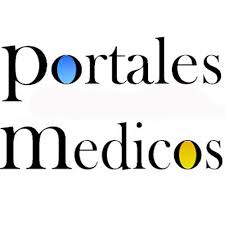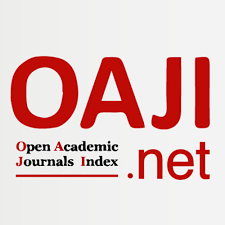El Aumento de la Actividad Física en las Tareas Ocupacionales No Garantiza una Mejor Salud: Una paradoja técnico-científica
Resumen
La actividad física (AF) es un pilar fundamental en la promoción de la salud; no obstante, la denominada «paradoja de la actividad física» plantea que la actividad física ocupacional (AFO) podría no ofrecer los mismos beneficios para la salud que la actividad física realizada durante el tiempo libre (AFTL), e incluso conllevar riesgos significativos. Esta revisión analiza la relación entre la AFO y los resultados de salud, destacando las diferencias clave en términos de intensidad, duración y contexto del esfuerzo físico. La evidencia demuestra que la AFO, particularmente en tareas laborales que implican esfuerzos continuos exigentes en esfuerzo físico o de alta intensidad en actividades repetitivas, se asocia con un incremento en los niveles de inflamación, un mayor riesgo de mortalidad cardiovascular y consecuencias negativas para la salud mental, contrastando con los efectos protectores atribuidos a la AFTL. Esta discrepancia resalta la relevancia del contexto en el que se realiza la AF; mientras que la AFTL suele ser autogestionada y llevada a cabo en entornos favorables, la AFO es típicamente involuntaria y ocurre bajo condiciones demandantes. Las intervenciones específicas en el entorno laboral, como las estrategias de diseño activo y los programas estructurados de actividad física, se presentan como herramientas prometedoras para contrarrestar los efectos perjudiciales de la AFO. Estos hallazgos subrayan la necesidad de adoptar enfoques diferenciados en la promoción de la AF, reconociendo los riesgos y beneficios únicos asociados con cada contexto. Abordar la paradoja de la AFO mediante intervenciones diseñadas específicamente podría optimizar los resultados de salud de trabajadores que desempeñan funciones físicamente exigentes, especialmente aquellos con bajos niveles de condición física.
Recibido:22/04/2005
Aceptado: 16/05/2025
Palabras clave
Texto completo:
PDF (English)Referencias
Marquez DX, Aguiñaga S, Vásquez PM, Conroy DE, Erickson KI, Hillman C, et al. A systematic review of physical activity and quality of life and well-being. Transl Behav Med . 2020;10(5):1098–109. Doi: http://dx.doi.org/10.1093/tbm/ibz198
An H-Y, Chen W, Wang C-W, Yang H-F, Huang W-T, Fan S-Y. The relationships between physical activity and life satisfaction and happiness among young, middle-aged, and older adults. Int J Environ Res Public Health. 2020;17(13):4817. Doi: http://dx.doi.org/10.3390/ijerph17134817
Pan B, Ge L, Xun Y-Q, Chen Y-J, Gao C-Y, Han X, et al. Exercise training modalities in patients with type 2 diabetes mellitus: a systematic review and network meta-analysis. Int J Behav Nutr Phys Act. 2018;15(1). Doi: http://dx.doi.org/10.1186/s12966-018-0703-3
Bull FC, Al-Ansari SS, Biddle S, Borodulin K, Buman MP, Cardon G, et al. World Health Organization 2020 guidelines on physical activity and sedentary behaviour. Br J Sports Med. 2020;54(24):1451–62. Doi: http://dx.doi.org/10.1136/bjsports-2020-102955
Cillekens B, Lang M, van Mechelen W, Verhagen E, Huysmans MA, Holtermann A, et al. How does occupational physical activity influence health? An umbrella review of 23 health outcomes across 158 observational studies. Br J Sports Med. 2020;54(24):1474–81. Doi: http://dx.doi.org/10.1136/bjsports-2020-102587
Kazemi A, Soltani S, Aune D, Hosseini E, Mokhtari Z, Hassanzadeh Z, et al. Leisure-time and occupational physical activity and risk of cardiovascular disease incidence: a systematic-review and dose-response meta-analysis of prospective cohort studies. Int J Behav Nutr Phys Act. 2024;21(1). Doi: http://dx.doi.org/10.1186/s12966-024-01593-8
Gao W, Sanna M, Chen Y-H, Tsai M-K, Wen C-P. Occupational sitting time, leisure physical activity, and all-cause and cardiovascular disease mortality. JAMA Netw Open. 2024;7(1):e2350680. Doi: http://dx.doi.org/10.1001/jamanetworkopen.2023.50680
Coenen P, Huysmans MA, Holtermann A, Krause N, van Mechelen W, Straker LM, et al. Towards a better understanding of the ‘physical activity paradox’: the need for a research agenda. Br J Sports Med. 2020;54(17):1055–7. Doi: http://dx.doi.org/10.1136/bjsports-2019-101343
Coenen P, Huysmans MA, Holtermann A, Krause N, van Mechelen W, Straker LM, et al. Do highly physically active workers die early? A systematic review with meta-analysis of data from 193 696 participants. Br J Sports Med. 2018;52(20):1320–6. Doi: http://dx.doi.org/10.1136/bjsports-2017-098540
Holtermann A. Physical activity health paradox: reflections on physical activity guidelines and how to fill research gap. Occup Environ Med. 2022;79(3):145–6. Doi: http://dx.doi.org/10.1136/oemed-2021-108050
Dalene KE, Tarp J, Selmer RM, Ariansen IKH, Nystad W, Coenen P, et al. Occupational physical activity and longevity in working men and women in Norway: a prospective cohort study. Lancet Public Health. 2021;6(6):e386–95. Doi: http://dx.doi.org/10.1016/s2468-2667(21)00032-3
Bonekamp NE, Visseren FLJ, Ruigrok Y, Cramer MJM, de Borst GJ, May AM, et al. Leisure-time and occupational physical activity and health outcomes in cardiovascular disease. Heart. 2023;109(9):686–94. Doi: http://dx.doi.org/10.1136/heartjnl-2022-321474
Cillekens B, Ketels M, Hallman D, Gupta N, Clays E, Maaike H, et al. O7-1 The association of occupational and leisure time physical activity with all-cause mortality. Using an individual participant dataset (N = 634,131). Eur J Public Health. 2022;32(Supplement_2). Doi: http://dx.doi.org/10.1093/eurpub/ckac094.049
Holtermann A, Krause N, van der Beek AJ, Straker L. The physical activity paradox: six reasons why occupational physical activity (OPA) does not confer the cardiovascular health benefits that leisure time physical activity does. Br J Sports Med. 2018;52(3):149–50. Doi: http://dx.doi.org/10.1136/bjsports-2017-097965
Cillekens B, Huysmans MA, Holtermann A, van Mechelen W, Straker L, Krause N, et al. Physical activity at work may not be health enhancing. A systematic review with meta-analysis on the association between occupational physical activity and cardiovascular disease mortality covering 23 studies with 655 892 participants. Scand J Work Environ Health. 2022;48(2):86–98. Doi: http://dx.doi.org/10.5271/sjweh.3993
Prince SA, Rasmussen CL, Biswas A, Holtermann A, Aulakh T, Merucci K, et al. The effect of leisure time physical activity and sedentary behaviour on the health of workers with different occupational physical activity demands: a systematic review. Int J Behav Nutr Phys Act. 2021;18(1). Doi: http://dx.doi.org/10.1186/s12966-021-01166-z
Löllgen H, Papadopoulou T. Updated meta-analysis of prevention of cardiovascular mortality by regular physical activity. Eur J Prev Cardiol. 2018;25(17):1861–3. Doi: http://dx.doi.org/10.1177/2047487318800819
Lacombe J, Armstrong MEG, Wright FL, Foster C. The impact of physical activity and an additional behavioural risk factor on cardiovascular disease, cancer and all-cause mortality: a systematic review. BMC Public Health. 2019;19(1). Doi: http://dx.doi.org/10.1186/s12889-019-7030-8
Dedele A, Miskinyte A. Association between leisure-time physical activity and the risk of chronic diseases. Eur J Public Health. 2019;29(Supplement_4). Doi: http://dx.doi.org/10.1093/eurpub/ckz186.195
Aerts N, Le Goff D, Odorico M, Le Reste JY, Van Bogaert P, Peremans L, et al. Systematic review of international clinical guidelines for the promotion of physical activity for the primary prevention of cardiovascular diseases. BMC Fam Pract. 2021;22(1). Doi: http://dx.doi.org/10.1186/s12875-021-01409-9
Amin M, Kerr D, Atiase Y, Aldwikat RK, Driscoll A. Effect of physical activity on metabolic syndrome markers in adults with Type 2 diabetes: A systematic review and meta-analysis. Sports. 2023;11(5):101. Doi: http://dx.doi.org/10.3390/sports11050101
Lugo D, Pulido AL, Mihos CG, Issa O, Cusnir M, Horvath SA, et al. The effects of physical activity on cancer prevention, treatment and prognosis: A review of the literature. Complement Ther Med. 2019;44:9–13. Doi: http://dx.doi.org/10.1016/j.ctim.2019.03.013
Jussila JJ, Pulakka A, Ervasti J, Halonen JI, Mikkonen S, Allaouat S, et al. Associations of leisure-time physical activity and active school transport with mental health outcomes: A population-based study. Scand J Med Sci Sports. 2023;33(5):670–81. Doi: http://dx.doi.org/10.1111/sms.14292
Aguilar BAS, Tebar WR, Silva SCB, Gomes LQ, Damato TMM, Mota J, et al. Leisure-time exercise is associated with lower depressive symptoms in community dwelling adults. EJSS (Champaign). 2022;22(6):916–25. Doi: http://dx.doi.org/10.1080/17461391.2021.1895892
Singh B, Olds T, Curtis R, Dumuid D, Virgara R, Watson A, et al. Effectiveness of physical activity interventions for improving depression, anxiety and distress: an overview of systematic reviews. Br J Sports Med. 2023;57(18):1203–9. Doi: http://dx.doi.org/10.1136/bjsports-2022-106195
Deci EL, Ryan RM. Self-determination theory: A macrotheory of human motivation, development, and health. Can Psychol. 2008;49(3):182–5. Doi: http://dx.doi.org/10.1037/a0012801
Jordakieva G, Hasenoehrl T, Steiner M, Jensen-Jarolim E, Crevenna R. Occupational physical activity: the good, the bad, and the proinflammatory. Front Med (Lausanne). 2023;10. Doi: http://dx.doi.org/10.3389/fmed.2023.1253951
Hallman D, Cillekens B, Ketels M, Gupta N, Clays E, Maaike H, et al. P04-10 The Physical activity health paradox - what do we know about physiological mechanisms? (editorial). Eur J Public Health. 2022;32(Supplement_2). Doi: http://dx.doi.org/10.1093/eurpub/ckac095.064
Herbert C. Enhancing mental health, well-being and active lifestyles of university students by means of physical activity and exercise research programs. Front Public Health. 2022;10. Doi: http://dx.doi.org/10.3389/fpubh.2022.849093
Wolff MB, O’Connor PJ, Wilson MG, Gay JL. Associations between occupational and leisure-time physical activity with employee stress, burnout and well-being among healthcare industry workers. Am J Health Promot. 2021;35(7):957–65. Doi: http://dx.doi.org/10.1177/08901171211011372
de-Pedro-Jiménez D, Meneses-Monroy A, de Diego-Cordero R, Hernández-Martín MM, Moreno-Pimentel AG, Romero-Saldaña M. Occupational and leisure-time physical activity related to job stress and job satisfaction: Correspondence analysis on a population-based study. Int J Environ Res Public Health. 2021;18(21):11220. Doi: http://dx.doi.org/10.3390/ijerph182111220
White RL, Vella S, Biddle S, Sutcliffe J, Guagliano JM, Uddin R, et al. Physical activity and mental health: a systematic review and best-evidence synthesis of mediation and moderation studies. Int J Behav Nutr Phys Act. 2024;21(1). Doi: http://dx.doi.org/10.1186/s12966-024-01676-6
Dabkowski E, Porter JE, Barbagallo M, Prokopiv V, Snell C, Missen K. A systematic literature review of workplace physical activity programs: an exploration of barriers and enabling factors. Cogent Psychol. 2023;10(1). Doi: http://dx.doi.org/10.1080/23311908.2023.2186327
Schaller A, Stassen G, Baulig L, Lange M. Physical activity interventions in workplace health promotion: objectives, related outcomes, and consideration of the setting—a scoping review of reviews. Front Public Health. 2024;12. Doi: http://dx.doi.org/10.3389/fpubh.2024.1353119
Li Y, Guo B, Meng Q, Yin L, Chen L, Wang X, et al. Associations of long-term exposure to air pollution and physical activity with the risk of systemic inflammation-induced multimorbidity in Chinese adults: results from the China multi-ethnic cohort study (CMEC). BMC Public Health. 2023;23(1). Doi: http://dx.doi.org/10.1186/s12889-023-17518-2
Zhao L, Wei Y, Liu Q, Cai J, Mo X, Tang X, et al. Association between multiple-heavy-metal exposures and systemic immune inflammation in a middle-aged and elderly Chinese general population. BMC Public Health. 2024;24(1). Doi: http://dx.doi.org/10.1186/s12889-024-18638-z
Zelenovic M, Kontro T, Constantin Dumitru R, Aksovic N, Bjelica B, Iulian Alexe D, Corneliu DC. Leisure-Time Physical Activity and All-Cause Mortality: A Systematic Review. Revista De Psicología Del Deporte (Journal of Sport Psychology) (Internet). 2022 (Cite 17/01/2025). 31(1), 1–16. Available from: https://www.rpd-online.com/index.php/rpd/article/view/630
Gómez-Recasens M, Alfaro-Barrio S, Tarro L, Llauradó E, Solà R. Occupational physical activity and cardiometabolic risk factors: A cross-sectional study. Nutrients. 2023;15(6):1421. Doi: http://dx.doi.org/10.3390/nu15061421
Väisänen D, Kallings LV, Andersson G, Wallin P, Hemmingsson E, Ekblom-Bak E. Lifestyle-associated health risk indicators across a wide range of occupational groups: a cross-sectional analysis in 72,855 workers. BMC Public Health. 2020;20(1). Doi: http://dx.doi.org/10.1186/s12889-020-09755-6
Belanger MJ, Rao P, Robbins JM. Exercise, physical activity, and cardiometabolic health: Pathophysiologic insights. Cardiol Rev . 2022;30(3):134–44. Doi: http://dx.doi.org/10.1097/crd.0000000000000417
de Vries JD, Bakker AB. The physical activity paradox: a longitudinal study of the implications for burnout. Int Arch Occup Environ Health. 2022;95(5):965–79. Doi: http://dx.doi.org/10.1007/s00420-021-01759-y
Jung FU, Pabst A, Rodriguez FS, Luppa M, Engel C, Kirsten T, et al. Perceived stress of mental demands at work, objective stress and resilience – an analysis of the LIFE-Adult-study. J Occup Med Toxicol. 2023;18(1). Doi: http://dx.doi.org/10.1186/s12995-023-00388-0
Proper KI, van Oostrom SH. The effectiveness of workplace health promotion interventions on physical and mental health outcomes – a systematic review of reviews. Scand J Work Environ Health. 2019;45(6):546–59. Doi: http://dx.doi.org/10.5271/sjweh.3833
Marin-Farrona M, Wipfli B, Thosar SS, Colino E, Garcia-Unanue J, Gallardo L, et al. Effectiveness of worksite wellness programs based on physical activity to improve workers’ health and productivity: a systematic review. Syst Rev. 2023;12(1). Doi: http://dx.doi.org/10.1186/s13643-023-02258-6
Becker I, Wallmann-Sperlich B, Rupp R, Bucksch J. Interventionen zur Reduzierung sitzenden Verhaltens am Büroarbeitsplatz – eine systematische Literaturanalyse. Gesundheitswesen. 2019;81(08/09):606–14. Doi: http://dx.doi.org/10.1055/s-0043-112746
Cocchiara RA, Peruzzo M, Mannocci A, Ottolenghi L, Villari P, Polimeni A, et al. The use of yoga to manage stress and burnout in healthcare workers: A systematic review. J Clin Med. 2019;8(3):284. Doi: http://dx.doi.org/10.3390/jcm8030284
Della Valle E, Palermi S, Aloe I, Marcantonio R, Spera R, Montagnani S, et al. Effectiveness of workplace Yoga interventions to reduce perceived stress in employees: A systematic review and meta-analysis. J Funct Morphol Kinesiol. 2020;5(2):33. Doi: http://dx.doi.org/10.3390/jfmk5020033
Grimani A, Aboagye E, Kwak L. The effectiveness of workplace nutrition and physical activity interventions in improving productivity, work performance and workability: a systematic review. BMC Public Health. 2019;19(1). Doi: http://dx.doi.org/10.1186/s12889-019-8033-1
Loitz CC, Potter RJ, Walker JL, McLeod NC, Johnston NJ. The effectiveness of workplace interventions to increase physical activity and decrease sedentary behaviour in adults: protocol for a systematic review. Syst Rev. 2015;4(1). Doi: http://dx.doi.org/10.1186/s13643-015-0166-4
Ramezani M, Tayefi B, Zandian E, SoleimanvandiAzar N, Khalili N, Hoveidamanesh S, et al. Workplace interventions for increasing physical activity in employees: A systematic review. J Occup Health. 2022;64(1). Doi: http://dx.doi.org/10.1002/1348-9585.12358
Engelen L. Does active design influence activity, sitting, wellbeing and productivity in the workplace? A systematic review. Int J Environ Res Public Health. 2020;17(24):9228. Doi: http://dx.doi.org/10.3390/ijerph17249228
DOI: https://www.doi.org/10.53766/AcBio/Se encuentra actualmente indizada en: | |||
 |  |  | |
  |  |  |  |
 |  |  |  |
 |  |  | |
![]()
Todos los documentos publicados en esta revista se distribuyen bajo una
Licencia Creative Commons Atribución -No Comercial- Compartir Igual 4.0 Internacional.
Por lo que el envío, procesamiento y publicación de artículos en la revista es totalmente gratuito.




